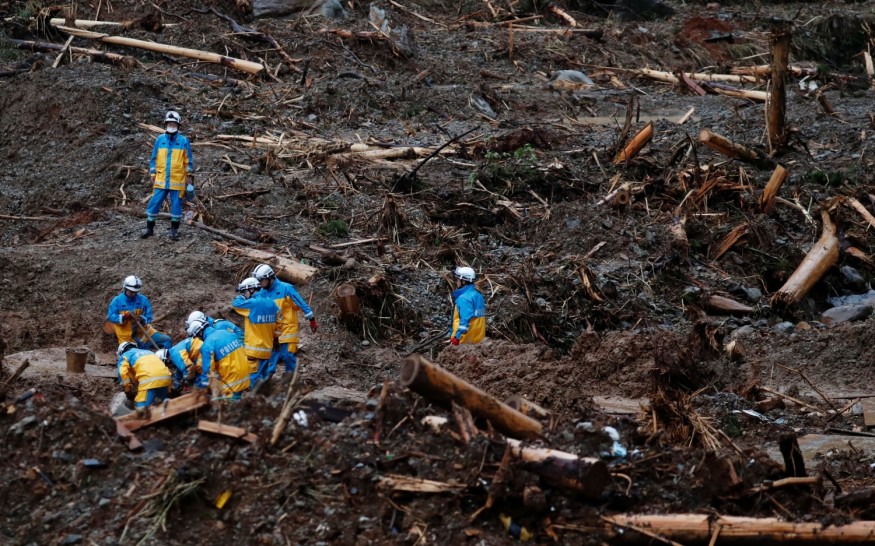
Rescuers scrambled on Thursday to search people isolated by the catastrophic flooding and mudslides as hundreds of people in scenic hot springs and hiking areas in central Japan are still stranded. The death toll in the southern region is almost 60, and more people are still missing.
The death toll since Saturday has reached 59 as of Thursday morning, and most of the deaths are from Kumamoto prefecture, the hardest-hit area.
The tourist spots Nagano and Gifu, where scenic mountain trails and hot springs are known, the torrential rains have flooded the features.
In Kamikochi, more than 300 people, including visitors and hotel staff, were trapped as the main road connecting the town to Matsumoto was blocked by floods and mudslides. Prefecture officials, however, reported that all the stranded people are safe.
In Gifu, hundreds are still trapped in Gero and Otake, a famous hot spring town. Officials said that almost 1,000 households or 2,300 people are still isolated due to floods and mudslides.
Local farmers and fishermen are severely affected. Floodwaters severely damaged vegetables and fishes that are almost ready for shipment to consumers. Eel grower Kazuya Kusuda said that he could not ship his eels, feed, or check on his eels as rains have hit his culturing farm. Masatoshi Inayosi, a local farmer from the Kurume City of Fukuoka, said his mustard spinach was ready for harvesting when the floods ravaged it.
After the landslides and floods, houses were reduced to rubble, house items, and appliances were damaged, and homes have become inhabitable.
In Kumamoto, an official said that there is no more stranded resident, and they can now reach all the areas which have been isolated. The focus now is on doing clean-up operations. Forty (40) residents in Ashikita Village in the region were rescued after being stranded for five days due to the floods and landslides.
On Thursday, Kumamoto started accepting volunteers to help residents clean their homes. Officials said that the volunteers must only be from Kumamoto, and temperature checks and masks are required to curb the coronavirus spread.
Thousands of people are still in areas under evacuation advisories, as leaving is not mandatory. The number of people in the evacuation shelter is not known. The Japan Meteorological Agency issued an evacuation order to around 350,000 people, its second-highest evacuation order. Evacuation is not mandatory, with most residents choosing not to go to shelters due to fears of contracting the coronavirus.
Heavy rains will likely continue until July 12, urging citizens to take "extreme vigilance" for landslides and flooding, especially in low-lying areas.
Deployed troops numbered around 130,000 rescue workers and troops for search and rescue operations all over the country, Prime Minister Shinto Abe said.
According to authorities, the coronavirus pandemic complicates the rescue and evacuation efforts. COVID-19 has already claimed 1,000 lives, and there are 20,000 infected cases in the country. Social distancing reduced the capacity at the shelters, while many opted to stay in their vehicles for fear of contracting coronavirus.
© 2025 NatureWorldNews.com All rights reserved. Do not reproduce without permission.





